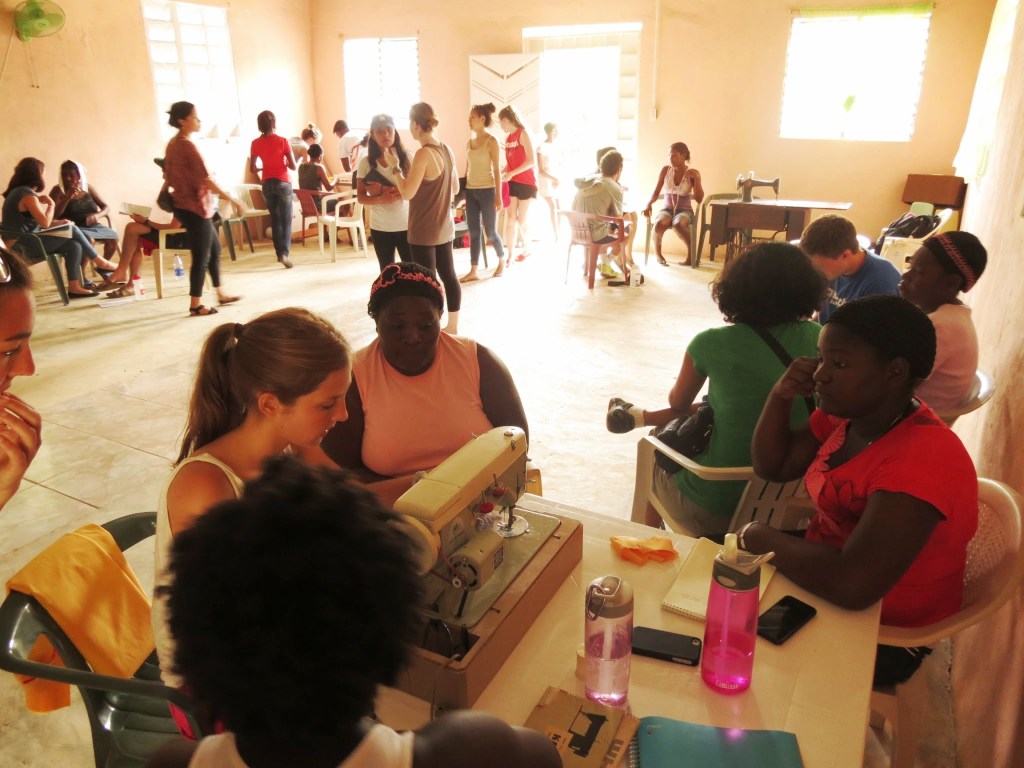The business of doing good

In the mornings, the students were curious learners, studying the ins and outs of microfinance and economic development in Latin America at the Santo Domingo Institute of Technology. In the afternoons, they were unpaid consultants, surveying clients of Esperanza International, a leading microcredit organization, and writing qualitative reports for the nonprofit’s chief financial officer.
It was May and some 30 undergraduates were working their way through the first two weeks of the Social Enterprise Institute’s monthlong international field study program to Cuba and the Dominican Republic. Experiential learning opportunities like these, built on the principles of the Grameen Bank model of microfinance, give students the chance to take global service to a new level through cultural immersion.
“I’m really interested in understanding microfinance within the context of Latin American and the Caribbean,” said Katherine Panayotov, SSH’15. “This program was the perfect way to understand how the field works and how international organizations implement changes in countries that are trying to get out of poverty.”
Indeed, SEI is grounded in the belief that business can be a powerful tool in helping to alleviate poverty in the developing world. The institute was founded in 2007 by Dennis Shaughnessy, an executive professor of innovation and entrepreneurship in the D’Amore-McKim School of Business. In 2008, he started running field study programs to South Africa and the Dominican Republic and spearheaded this spring’s program with Gordon Adomdza, an assistant academic specialist of entrepreneurship and innovation.
The pair designed the program in accordance with Northeastern’s education model, which integrates classroom study with professional experience. “In class, we give the students the theories,”Adomdza said. “In the field, they validate those theories.”
As a case in point, the students traveled to El Caño, a rural community in the Monte Plata region of the Dominican Republic. There the group surveyed some 20 impoverished women, gauging their interest in working for a sewing cooperative aimed at building sustainable economic growth.
This past spring, Panayotov helped design a business model for the cooperative. Later this month, Dominican Republic native Richard Ng, DMSB’17, will travel to El Caño to continue working on the project.
“El Caño is isolated and economic activity is virtually non-existent,” Panayotov explained. “The sewing cooperative gives these women a way to apply their skills to generate a sustainable form of income.”
When Panayotov and her peers weren’t consulting with fledgling entrepreneurs, they were volunteering in other ways. In mid-May, the young humanitarians visited two sites—a church called Mission Emanuel and a fair-trade clothing company called Alta Gracia Apparel, which supplies T-shirts to Northeastern’s bookstore. There they offered free eye exams to some 350 community members and distributed reading glasses provided by Vision Spring, a nonprofit partner of the field study program.
“We weren’t curing blindness, but it was an amazing experience to watch as the community members tried on glasses for the first time,” said Miranda Beggin, DMSB’17, who helped design eye exam training materials in Shaughnessy’s impact investing course this past spring. “Most of these people had never been able to afford glasses.”
After completing the community service project, the students traveled to Havana, the capital city of Cuba. They stayed for one week, touring a country that only recently opened its borders to outside investment and speaking with several Cubans, including an economist who regularly consults with Raul Castro, Cuba’s head of state.
Adomdza, who led this portion of the program, asked the students to design two empathy maps of the life of the average Cuban–one before the start of the weeklong experience and one after. What does the country’s typical citizen think and feel? What does he say and do? How does the hypothesis compare with the reality?
The findings surprised the students, many of whom had predicted that the typical Cuban would be poor, unhappy, and on the verge of fleeing. “We went in with a very different perspective than we came out of there with,” Beggin explained, noting that the Cuban government has undergone something of a transformation over the past few years, developing new partnerships with international corporations and the hotel industry. “The people I spoke with seemed happy. They didn’t seem like they wanted to leave.”
Added Adomdza: “One of the main lessons from Cuba was that there were so many reforms going on in the private sector that it was difficult to get a sense of where the country was going.”





